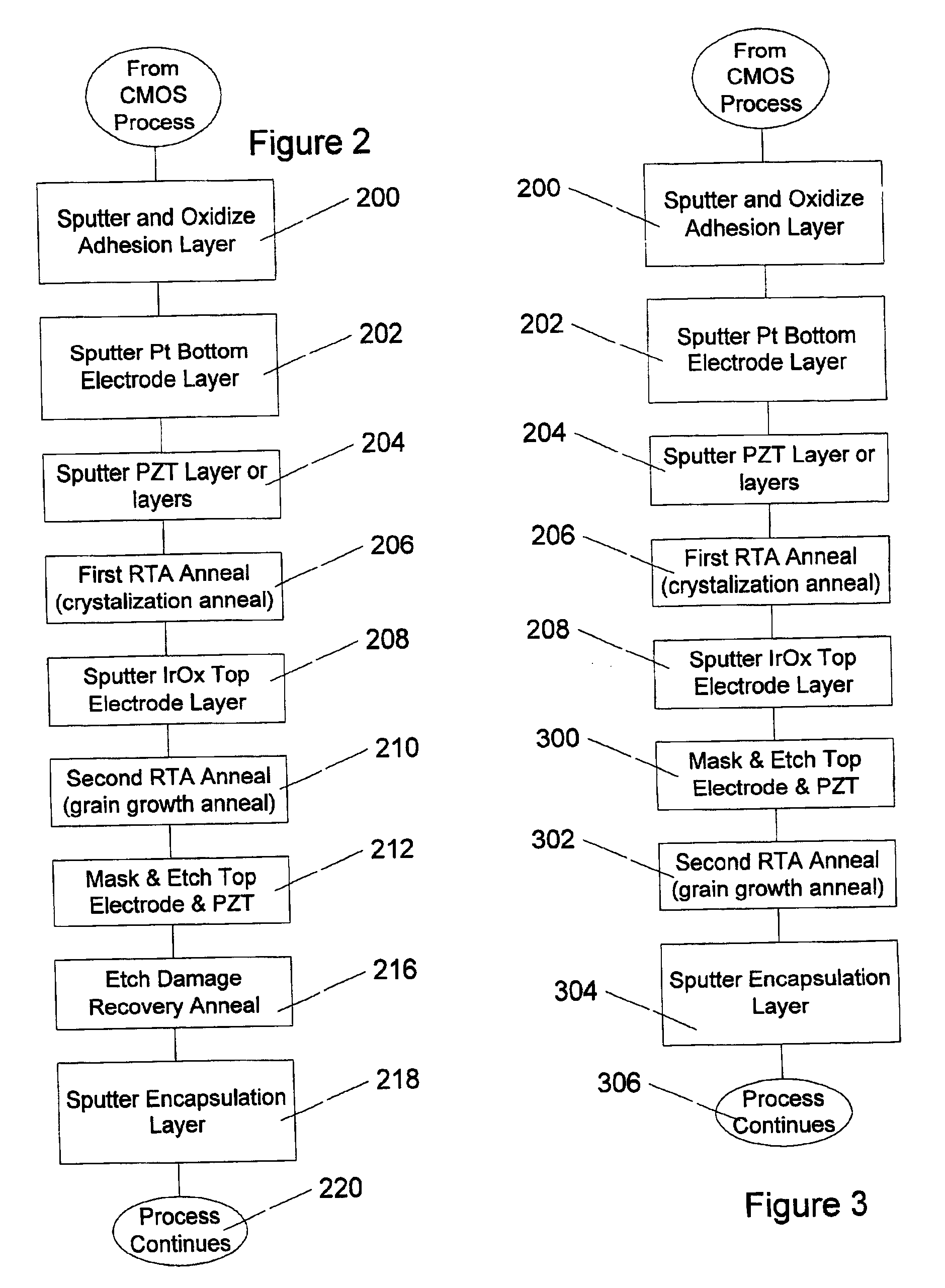Process for producing high quality PZT films for ferroelectric memory integrated circuits
a ferroelectric memory and integrated circuit technology, applied in the direction of transistors, instruments, material analysis, etc., can solve the problems of limiting the life of the system, slow device writing, and limiting the design of some systems
- Summary
- Abstract
- Description
- Claims
- Application Information
AI Technical Summary
Benefits of technology
Problems solved by technology
Method used
Image
Examples
Embodiment Construction
[0039]With reference to FIGS. 1 and 2, a ferroelectric capacitor is typically grown on top of a thermal oxide layer 100 of a partially-finished CMOS integrated circuit wafer. On this oxide layer is sputtered 200 a layer of Titanium from fifty to two hundred, preferably two hundred, angstroms thick. This titanium layer is oxidized at from 300 to 700 degrees C., with 700 degrees C. preferred, for from ten minutes to one hour in oxygen atmosphere to form a adhesion layer 102 of titanium dioxide that enhances adhesion, and thereby prevent delamination, of following layers.
[0040]On the oxidized titanium adhesion layer 100 is sputtered 202 a Platinum bottom electrode layer 104 from 500 to 2500 angstroms thick, with 1000 angstroms thickness preferred for optimum electrode quality. For optimum electrode quality, and optimum quality of following PZT layers, this layer is deposited by DC sputtering with a substrate temperature of 450 to 600 degrees C. For purposes of this application, a noble...
PUM
| Property | Measurement | Unit |
|---|---|---|
| partial pressure | aaaaa | aaaaa |
| thickness | aaaaa | aaaaa |
| thickness | aaaaa | aaaaa |
Abstract
Description
Claims
Application Information
 Login to View More
Login to View More - R&D
- Intellectual Property
- Life Sciences
- Materials
- Tech Scout
- Unparalleled Data Quality
- Higher Quality Content
- 60% Fewer Hallucinations
Browse by: Latest US Patents, China's latest patents, Technical Efficacy Thesaurus, Application Domain, Technology Topic, Popular Technical Reports.
© 2025 PatSnap. All rights reserved.Legal|Privacy policy|Modern Slavery Act Transparency Statement|Sitemap|About US| Contact US: help@patsnap.com



